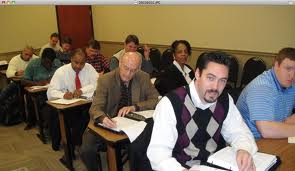Are Your Salespeople Calling on “Power” or “Parrots”?
There are many “gate keepers” we must often pass through to close a sale. With technology today we have buyers who hide behind voice mail and email and send out RFP’s and we have little or no discussion with them. If we try to make a cold call we may be greeted by a “no solicitation sign” or guard house that will not let us pass without an appointment. If we make it to the lobby we may have a receptionist gate keeper trained not to let us pass, and not to share decision makers names. However one of the gate keepers sales must identify quickly is the buyer who has no purchasing power and is a Parrot.
So your salesperson has made it through the gauntlet of obstacles we now face in sales and finally met with the buyer. The buyer shared what they are looking for, what their research has told them they need and your salesperson has presented. When we ask your salesperson for an update, they say ; “we had a good meeting”. OK, great to know, but why don’t we have the purchase order? What is preventing the buyer from giving you the order? Why is this sale taking so long? I thought you said you thought you won the order two months ago…where is it?
If you find yourself asking your salespeople these questions and more, chances are your salesperson actually presented your solution to a parrot and not power. Parrots are tasked with finding the best product, service and price for a particular problem to be solved and they echo their findings to someone else or others with the power to make the decision to purchase. Rarely are buyers the users of your solution but they are the person who actually inputs the purchase order into their system and assigns the PO.
What should your salespeople do if a sale they thought they won goes dark?
What should salespeople do if they discover they are calling on a parrot?
How do we shorten the sales cycle when we never get to meet with power?
If you find yourself asking these questions there are ways to insure you win the sale. One of the leading ways is to equip and empower your buyer with tools to help them present your solution.
Good salespeople will always ask in their qualifying process: “who is also involved in making the buying decision?” Some buyers have already been assigned a budget and can cut the purchase order. However as the cost of the purchase climbs I have found others…often time many others will be involved in making the final decision. The key to winning these orders is clearly understanding the buying process, the criteria being used to evaluate solutions, and the buyer personas of those making or influencing the buying decision. I hear some of you saying; “Well Mark that is a lot of work to do on a PO that four other companies are also trying to win.” Yes it can be if you have not done the market work ahead of time. However if you know the buyers in your market, how they buy, who they need to get sign off from, and what is important to those influencers you can include it in your presentation.
I was asked to help a company some time ago and they had seen steady profitable growth for years and then as the economy changed their phones seemed to stop ringing. Sales dropped monthly to 1/10th of what they once were and their senior leaders were concerned. They heard through a friend what I do and hired me to solve this problem.
The first thing I always do is seek current market truths. After a series of win loss calls we discovered that our customers were also feeling the pinch of the economy tightening and their companies have tightened their restrictions on purchasing. Specifically purchases the size of the products our company was selling once were able to be approved of by the buyer now needed many other signatures. We now have CEO’s, CFO’s, various VP’s all needing to agree before a purchase order would be issued.
The trouble in this new reality was our buyers are great at buying and terrible at presenting, it’s not that they are bad people it is just not their gift. We asked if we could meet with and present our solutions to the key influencers and we were met with; “no, they are too busy and this is what I am paid to do”. So as we reviewed sales we lost we found one common “spin cycle” as I call them where the purchase seems to spin round and round and go no where was when a key user or decision maker challenged the buyer with a question or series of questions they needed answers to and the buyers were not prepared to answer. Once we understood this was occurring we created a presentation slide deck that specifically spoke to the common influencer buyer persona’s who needed to approve the purchase. In addition we added a new step early on in our sales process that involved a webinar with the buyer and the various power influencers to share our solution and ask questions to better understand what the influencers needed to make the buying decision at a time that worked for their crazy, short staffed schedules. Within three months sales were tracking back to historical levels and within eight months sales were up over 30% to their prior average monthly sales… in the worst economy this company had ever experienced.
How about your business…..
Are you calling on Parrots? Do you know?
Who do the Parrots repeat your presentation to?
What do those buyer personas need, require to approve the proposal?
What can you provide proactively based on your understanding of your customers’ process?
How can you adjust your repeatable sales process to adapt to how your buyers are buying today?
Yes, this market work takes some time, and you will definitely learn some things that will make you feel uneasy or even upset however the value you receive by adapting to these current market truths will far outweigh the time and pain.
(As a side note…while we adjusted our process and had record sales, one of our competitors doubled their advertising and eventually went out of business. Another downsized their operation and waited out the economic storm with plans to re-staff when business got back to normal. They are still in business, but have never re-staffed and have not brought their sales back to pre- economic challenge levels.)











